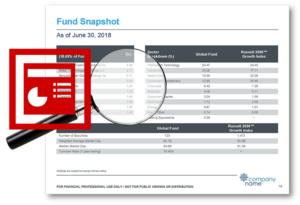Smudge Control: 6 Tips for Taking a Good Company to Great
by John Toepfer

I spent time at the Chicago Auto Show this weekend. I enjoy getting a look at all the latest feats in automotive engineering; the new Corvette’s design, the economy of the plug-in Focus Eco, the luxury of the Jaguar XF. Finding a billion dollars of R&D on display for close inspection under one roof is pretty close to heaven for me. I also enjoy studying merchandising and marketing of cars. There is enormous effort put into the presentations at this show and what we see tells us a lot about the manufacturers and the market.
As I wandered the rows of gleaming and carefully positioned vehicles, I couldn’t help but notice how many of those pristine polished paint jobs were besmirched by smudgy hand prints – sometimes in the oddest places too. (Timmy, did you have to smear your churro on that rocker panel?)
This is an auto show; land of first impressions and shiny fenders. Shouldn’t someone be circulating the Chevy pavilion, polishing rag and spray wax in hand, ready to mop-up churro grease and dropped popcorn bits without delay? So I began to take note of what brands did indeed have “smudge control” in their auto show game plan. Which ones anticipated the problem and had the solution planned and staffed? Acura and Ford accomplished this as well as a handful of others. Good for them. And shame on those who didn’t.
In the real world, smudges happen; it’s not tragic. But I believe that how we actively pursue smudge control might be an interesting way to distinguish a good organization from a great one.
As President of a software solution engineering company, our “smudge control” is being proactive with testing, quality analysis (QA) and especially with customer service. If a client is the one to discover an obvious problem, we have not done our job. If there’s a problem that we know of and don’t deal with it, we have not done our job. If something is not cleaned up and optimized and we choose to “just live with it” we’re not showing excellence. If we’re letting the smudges establish our image, shame on us!
Is a quiet customer a happy customer? Or are they just quietly annoyed?
Last week we spent time with a client that we had allowed to get “smudged”. This is not typical of us (and part of the problem was just how chaotic this client is), but the fact that we weren’t on top of our smudge control allowed things to get, um, messy. In resolving this problem we didn’t just dismiss the issue, we met with the client and had a heart-to-heart about the origins of the problem. We discussed how they might handle their churros with napkins and how we will add more people with polishing rags at the ready to keep things nice and shiny (if you will).
In having this discussion with the client, some rules of customer service came to mind.
How we “smudge-proof” our client services:
- Check work. Customers don’t like being used for QA – it’s on us to check our work. It’s on us to develop tools and methods that create a high level of assurance that when we change or adjust something, the client doesn’t experience unexpected impacts.
- Don’t deliver news that’s both bad and late. Customers will accept bad news gracefully if they are given time to adapt. Late news, and the silence that precedes it, is torturous to a client.
- Communication channels need to be both open and utilized. We’re working remotely from our clients, so they can’t see if we’re on the job or eating yogurt in the break room. It’s not enough that they know how to get in touch with us; we need to make sure they always feel confident that they know what’s going on.
- Report progress early and often. Customers will never complain about too much progress reporting. See numbers two and three above.
- Be careful with estimates. No matter how many times you say “this is just an estimate” clients will look to hold you to it. This goes both for timing and for costs. This is a tricky one; if we are too conservative, we’ll scare them off the project. If we’re too optimistic, we’ll end up either eating costs or having difficult conversations with the project sponsor later. Quoting software solution projects with a range and with a good clear description of the assumptions the quote is based on is the more open and honest way to approach this.
- Give the client flexibility. One of our fundamental values at Synthesis is being flexible. We’re famously adaptable to almost anything the client needs but sometimes the higher calling is to be an expert. We shouldn’t be modest about guiding clients into best practices. More often than not, we realize they are seeking that input. We’re the ones with the broad market experience in data aggregation and document automation. We’ve been down that road and we know where it ends. So as experts and professionals, it’s our job to anticipate and prepare our clients and to keep our surfaces “smudge free”.
 From the Blog: Fund Data Automation Solves Four Common Data Problems Faced by Fund Marketers |  From the Blog: How much does it cost to automate factsheets? 🧐 |  From the Blog: Build or Buy: How to Decide? |




 Compare the Top 3 Finserv Content Automation Vendors [White paper]
Compare the Top 3 Finserv Content Automation Vendors [White paper] Create Pitchbooks the Drive Sales [White paper]
Create Pitchbooks the Drive Sales [White paper] Build vs. Buy: Should Your Financial Services Firm Outsource or Insource Marketing Technology? [White paper]
Build vs. Buy: Should Your Financial Services Firm Outsource or Insource Marketing Technology? [White paper]  10 Tips for Rebranding your Fund Marketing Documents [White paper]
10 Tips for Rebranding your Fund Marketing Documents [White paper]




